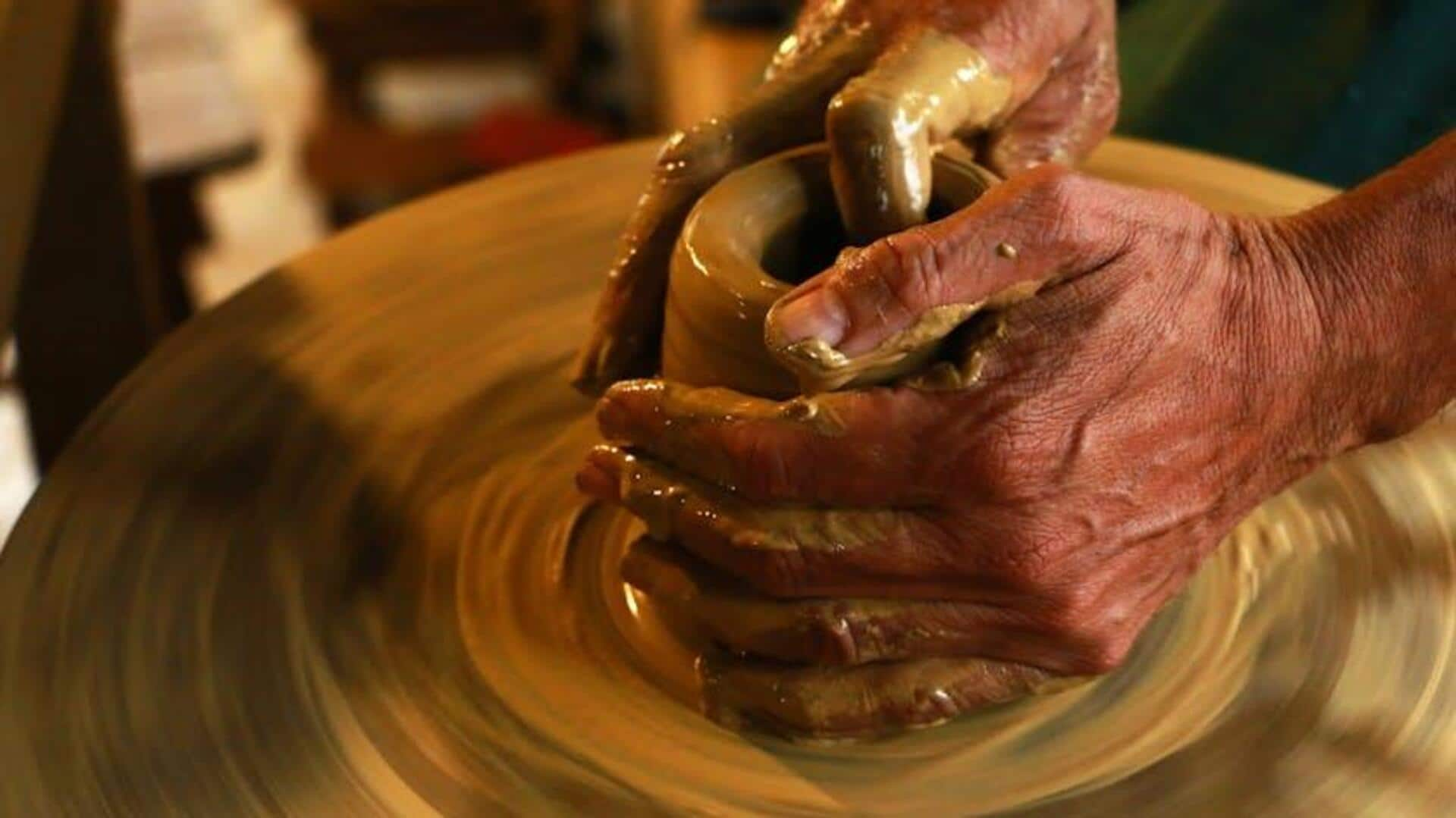
A beginner's guide to pottery
What's the story
Pottery is an ancient craft that involves shaping clay into various forms and then hardening them through heat. This art form has been practiced for thousands of years, with its roots tracing back to early human civilizations. Pottery serves both functional and decorative purposes, making it a versatile medium. The process requires skill, patience, and creativity, as artisans mold raw clay into beautiful pieces that can last for generations.
Clay varieties
Understanding different types of clay
There are different types of clay used in pottery, each having unique properties. Earthenware is one of the most common types and is known for its porous nature. Stoneware is more durable and less porous than earthenware, making it suitable for everyday use. Porcelain is a fine-grained clay that becomes translucent when fired at high temperatures. Each type offers different possibilities in terms of texture and finish.
Craft methods
Techniques used in pottery making
Potters use different techniques to shape their creations. Hand-building means using hands to form shapes without the help of a wheel. Wheel throwing uses a potter's wheel to spin the clay while shaping it with hands or tools. Slip casting involves pouring liquid clay into molds to create uniform pieces. Each technique requires a different set of skills and yields a distinct result.
Heat treatment
The firing process explained
Firing is an essential step in pottery making where shaped clay items are heated in kilns at high temperatures to harden them permanently. First, a piece undergoes bisque firing at lower temperatures to remove moisture without fully vitrifying it. After applying glaze, a second firing melts it onto the surface, creating a glass-like finish.
Beginner advice
Tips for beginners starting pottery
For pottery newbies, it is best to start with smaller projects. This way, you can master the basic techniques without getting into the complexities or costs of larger works or costly materials (like porcelain clay, which needs high-temperature kilns). It's a journey of practice, dedication, and perseverance towards mastery, appreciating the beauty of ceramics and making this creative endeavor a part of your life.